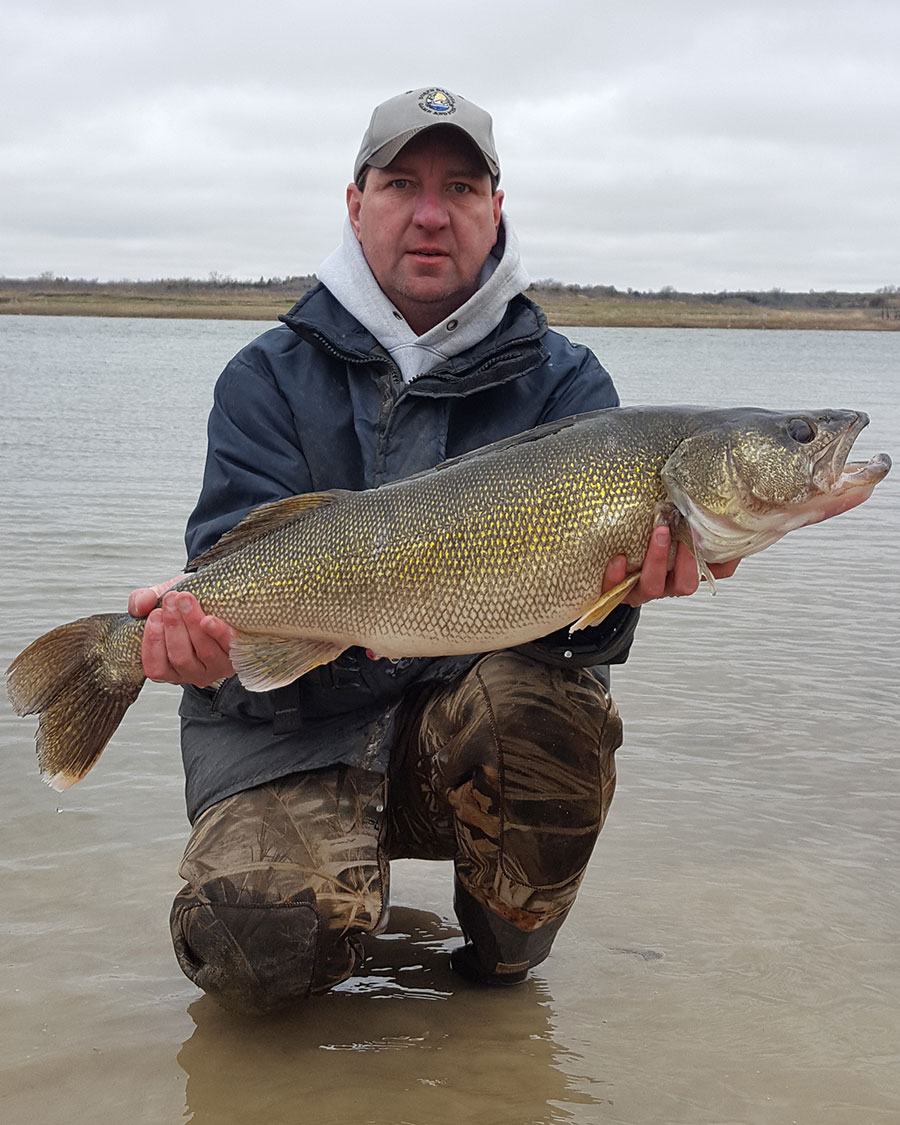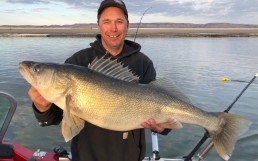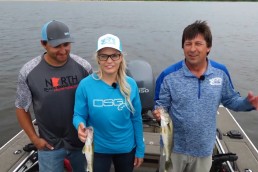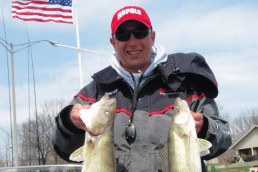Cover Water to Catch Walleyes on North Dakota’s Legendary Fisheries
SHARE THIS POST
Lake of the Dakota Prairies feature expansive reservoirs with lots of room for walleyes to roam. Massive Missouri River impoundments like Oahe and Sakakawea come foremost to mind. Devils Lake, Audubon, Long, Dry, McKenna and Angostura may be smaller in scope, yet are far from small.
Good walleye spots tend to remain good spots—although likely not every time you’re on the water. Fickle prairie winds can change direction and intensity on a moment’s notice, activating walleyes to move shallower and feed in some locales, while encouraging them to move away from recent feeding areas in favor of newly developing opportunities.
To catch walleyes on these lakes, you need to cover water to locate fish. After all, you can’t catch ‘em till you find ‘em! While schools of fish are often large and willing to bite, lots of open range may lie between schools. You must first eliminate unproductive areas to zero in on spots where you can strike gold. Marine electronics and onscreen maps are a big help. But nothing beats up-close-and-personal observation and fishing to see if they’re home.
Bottom bouncers were invented on the prairies for this very purpose. These curiously shaped weights feature a lead body, a wire “leg” protruding from the bottom that crawls up and down slopes when trolled, and an angled wire frame on top, to which you attach a leader trailing a baited spinner harness, hook or floating jighead. Traditionally, they’re baited with live nightcrawlers (2- or 3-hook spinner harnesses), or live minnows or leeches (single-hook versions).
‘Crawler harnesses combine the flash, vibration and pulsation of whirling blades in either metallic or painted finished, with the tempting appeal of live bait. Spinners work best at around 1.5 mph, ranging from just enough speed to barely rotate the blade, to really making it hum. Lower them into the water as you troll along until it makes bottom contact. Either handhold your rod or place it (and potentially several more rods) in rod holders. Troll along until you detect the rod tip shaking or beginning to bend, indicating a bite. Or sweep a handheld rod forward to set the hook. Leaders with no spinners, fished on bouncers, are usually fished much slower, sub-1 mph, to tempt bites from reluctant walleyes.
In recent years, more anglers have begun trolling diving crankbaits in Dakota waters. This can be as simple as longline trolling large, deep-diving lures along reservoir contours like points and humps, which has produced giant walleyes the past few seasons, notably in late fall.
Are you enjoying this post?
You can be among the first to get the latest info on where to go, what to use and how to use it!
Perhaps the most popular trolling method involves trolling mid-depth basin areas in large lakes, using leadcore line to barely skim small crankbaits along, just off bottom, at around 1.5 to 2.5 mph. Once again, leadcore (internally weighted) line is generally used for this form of trolling, letting out just enough line at trolling speeds for the crankbait to begin ticking bottom, and then cranking up a few turns on your reel before placing the rod in a holder. Adding planer boards to some lines allows you to troll a spread of lines to cover additional water side-to-side, perhaps experimenting by running a few lures at different depths. When your rod tip bends, fish on!
Once you’ve dialed in areas with active fish, you can continue trolling if the fish are fairly deep. You might consider vertically jigging with jigs tipped with live bait or soft plastic forage imitations. And perhaps even jigging alternative lures like Jigging Rapalas, blade baits or jigging spoons But if walleyes appear to be shallow, switch to a casting approach.

When fierce prairie winds and waves turn shallow shorelines into mudlines, get right up there and pitch jigs into the fray. Don’t be afraid to cast them right up to shore and retrieve them back through the cloudy water. Active, feeding walleyes can be right up in the murk in barely a few feet of water. Switch to casting crankbaits if you feel more attraction is needed to trigger strikes.
Many folks don’t realize that walleyes can be up that shallow even in calm, clear conditions. However, they’re likely to be spooky. This calls for long-distance pitching of shallow jigs tipped with live bait like half-‘crawlers, or soft plastic forage imitations like paddle tail or straight-tail grubs. Either slowly swim your jig back to the boat or impart intermittent lift-drop motions to the bait by lifting your rod tip during the retrieve, then lowering it when you pause your retrieve and the bait sinks.
North Dakota lakes and reservoirs frequently have areas with flooded standing timber that attract loads of walleyes into the shallows. Cast shad-shaped diving crankbaits amidst the timber, slowly retrieving them near the trunks and imparting occasional pauses to trigger strikes from following fish. Neutrally buoyant lures like Rapala X-Shads add a hint of vulnerability to your presentation as these lures suspend when paused, appearing highly vulnerable to attack.
MWO
SHARE THIS POST
Did you enjoy this post?
You can be among the first to get the latest info on where to go, what to use and how to use it!
MWO
We believe being outdoors is good. With more than 1,000 articles each year, MidWest Outdoors magazine is all about sharing outdoor experiences with you—where to go, what to use and how to use it… whether you’re close to home or on that trip of a lifetime.



